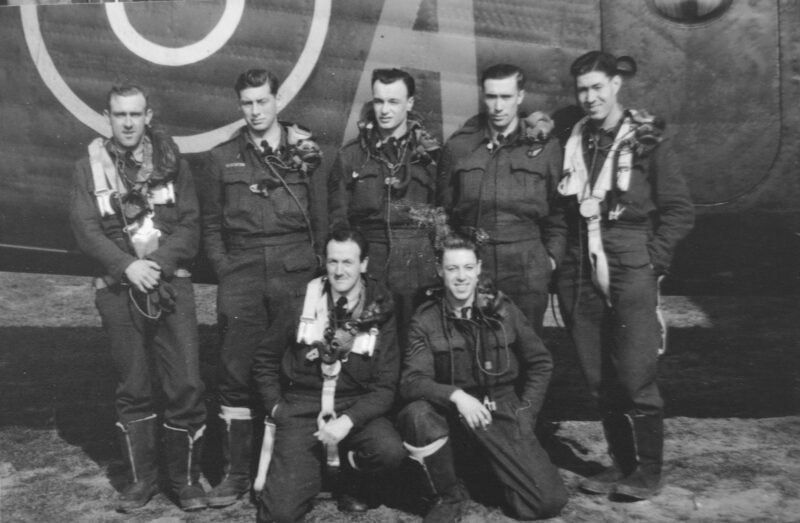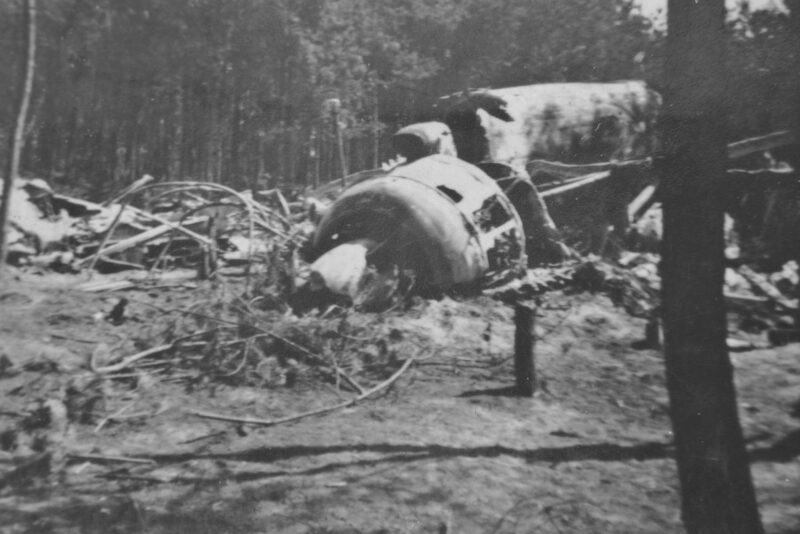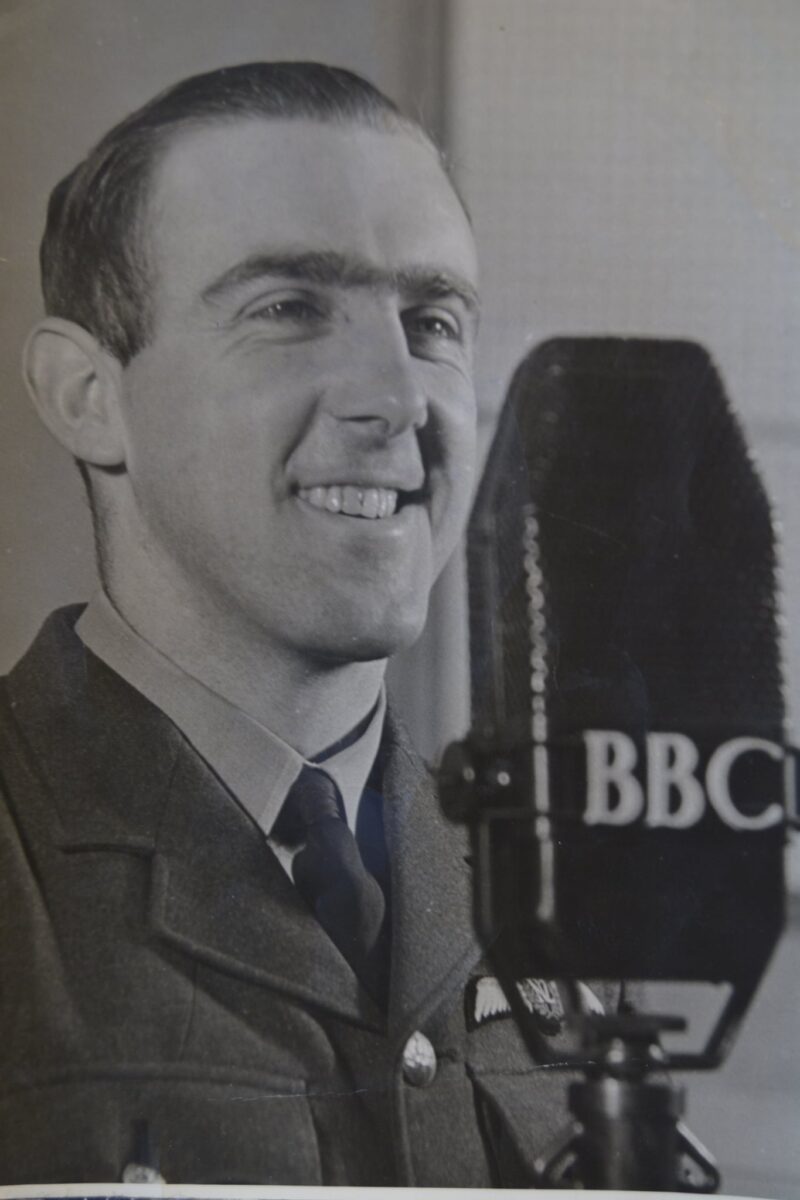Operations
Operations
Cunningham crew: Louvain 1944
As much as research paints a picture of Bomber Command operations, first-hand accounts provide a rich understanding of what airmen experienced. Bruce Cunningham shared the story of his final op, to Louvain (Leuven) in 1944. It was published in the NZBCA newsletter shortly before he passed away, aged 100. This is a transcript of his interview:
About three and a half weeks before the invasion Bomber Command was concentrating on putting out of operation the major marshalling yards in France, Belgium, Holland etc. We went to Louvain (Leuven) in Belgium on 11/12 May 1944 about 1 am. Soon after leaving the target something behind us set our starboard motor on fire.
(I) can recall the tracers. (The fire) could not be extinguished. Reports say fire spread to whole wing, but I must have been too absorbed to notice whether that was right or wrong. (The) trims were rendered useless and (the) control column was at right angle to normal. I had one leg hard on rudder to the floor.

The Cunningham crew, 514 Sq. 1944.
(Credit: NZBCA archives)
How we would have got home if the fire had gone out is an interesting point. Never short of an answer then but a landing somehow or other at Woodbridge would have been testing my ability.
Fire around the petrol tanks is always disturbing so I decided (we) no option but to bail out. I will never forgive RAF for withdrawing pilot type parachutes and replacing (them) with observer type. (With the) pilot type you sat on it as part of the harness. Observer types were loose and had to be attached with two hooks on the chest. The chute itself was put on the floor behind the pilot’s seat. (I) called the engineer to get my chute which he did by dumping it on my lap. (I) told him to hook it up as I could not spare an arm or hand. He put on one hook and left.
Next thing bomb aimer reports he could not open the escape hatch. (I) told him to jump on the b thing. That might have made it worse, but anyone would interpret that as use the utmost force. (I) found after the war this trouble was faced by many crews.
Whist in Germany (as a POW), I chummed up with a Polish officer. He was pilot of a Halifax which had its front blown off and he was catapulted into the open. If he had had an observer chute he would have perished.
After they had all gone (I) had to hold the control column with one arm and in the dark secure the other hook on the parachute. (I) then spent some time calling the two gunners in the rear to see if they had gone. Never got an answer. Probably they were first out. (I) spent the next 12 months much concerned as to whether or not they had got out safely as they were the only ones not to exit from the front. At the end of the forced march, at Luckenwalde, 30 miles south of Berlin, (I) met up with mid upper gunner who said he did reply. “Roger “was the answer needed. The rear gunner got back to UK and went on ops again only to be blown up on first op. Bombs from another Lanc above theirs. He claimed we were shot down by friendly fire and apparently would not be talked out of that.
The MU gunner was hit by the tail plane when he exited. The engineer landed on a railway line and after surrendering to some clown who shot him, then stole his cigarettes and took off. (They) treated him as local saboteur. Later he was found by some German who took him to hospital, and they operated. (I) understand he was treated fairly.
My job was to get out of (my) seat, bend down underneath (the)dashboard, and dive in the dark at a moving small escape hatch. (it) might have been helped if the aircraft did not start a determined roll as soon as controls were vacated. They don’t fly straight and level if trims are gone!!!

The remains of LL 739 in the forest.
(Credit: NZBCA archives)
Timing was so ever vital. (I am) forever grateful for the hand on my shoulder on that occasion. (I) landed on the roof of a two storeyed building with a very steep roof, chute wrapped around the chimney. Remember well the very odd thought, ‘here am I so close to my cobbers above returning home for a feed of eggs and bacon.’ Mighty odd envy. (I) got down through a trap door (into the cafe).
Eventually (I was) into the hands of about 10 or a dozen young German soldiers. (I) used French for the only time in my life to find the aircraft had not landed on someone’s house. They stole my wings which for some reason (I had) just pinned on my jacket. One Goon asked what my girlfriend would say when I did not return.

One of the many sketches Bruce did in Sagan POW camp.
(Credit: NZBCA archives)

Bruce Cunningham’s POW identification documents.
(Credit: NZBCA archives)
Three of my crew got back to UK. One was doing well until a group was supposedly being handed over to another helping source when in fact they were all turned over to the Gestapo. There had been an infiltrator who had posed as a shot down RAF airman and made a packet by turning them in. Later he was spotted by a Yank who saw him working in a Paris bar and finally someone shot him in a chook run. He had numerous aliases.
My navigator was picked up late one night by the Gestapo.
Post War
I did not bother to continue with close interest in air crew days after the war, I was busy catching up lost time but (was) treasurer of Wellington RSA for 23 years and closely involved in aeroclubs, topdressing and gliding. Had 100 collection days for RSA. They had a Rose Day about Armistice Day each year until 1983. Seems interest is growing these days.
Must get my daughter to dig out the well-known small horseshoe which was treated as a good luck charm. Forget the name of it at present but it is known worldwide. Fellow came this week to photograph a compass I bought off a Pole using a piece of chocolate. The manufacturer is famous. Survived a couple of searches with it in its leather pouch in my groin. It seems to be back to front. Maybe off a cannon but it shows north and that’s all that was needed.
Year’s later Bruce returned to Belgium:
The cafe owner’s daughter presented me with the rest of the parachute which she had used as a wedding dress. (I’ve) got it under my desk here. She gave it to me at a public reception at Rixensart in 1996. Got into the Brussels papers. At the reception was a Belgium Air Commodore who had been a prisoner for the whole war. Some story got around (that) I would not come down off the roof.
The building was a bank when I visited in 1996. As I travelled in the bullet train to Belgium I was a bit sore to see the thousands of acres I could have landed on but didn’t. However have to be thankful. One of my course was shot down about the same time and finished up in a concentration camp. He was a fighter pilot, (but I have) forgotten his name.
At least have now got a record for my family who know little of what went on 75 years ago. It’s coming up my 100th and they have been asking the odd question. Maybe natural to say little but if they ask seems they should be told.
Bruce passed away on 16 July aged 100 and recent research proved he was shot down by friendly fire

Bruce recorded a message home with the BBC ahead of his fateful final op.
(Credit: NZBCA Archives)